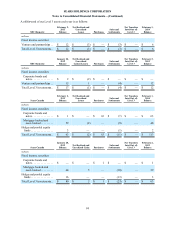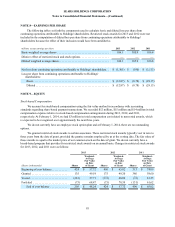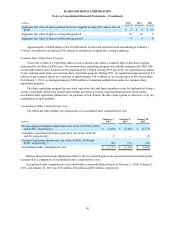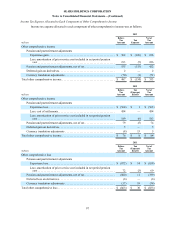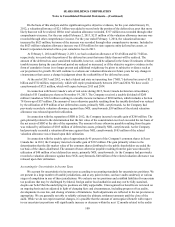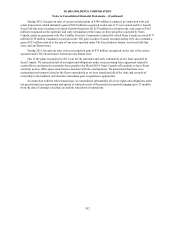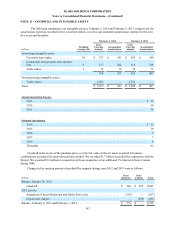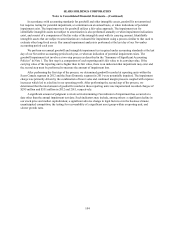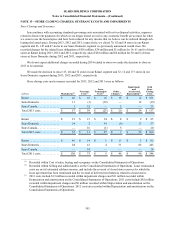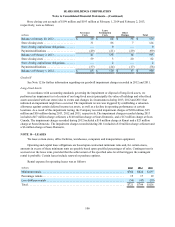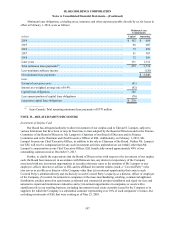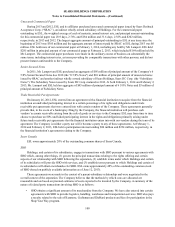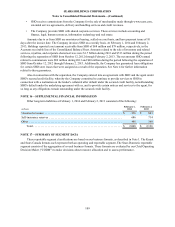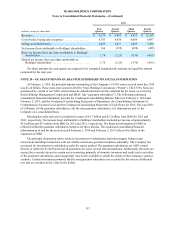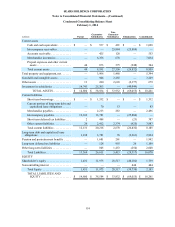Sears 2013 Annual Report Download - page 104
Download and view the complete annual report
Please find page 104 of the 2013 Sears annual report below. You can navigate through the pages in the report by either clicking on the pages listed below, or by using the keyword search tool below to find specific information within the annual report.SEARS HOLDINGS CORPORATION
Notes to Consolidated Financial Statements—(Continued)
104
In accordance with accounting standards for goodwill and other intangible assets, goodwill is not amortized
but requires testing for potential impairment, at a minimum on an annual basis, or when indications of potential
impairment exist. The impairment test for goodwill utilizes a fair value approach. The impairment test for
identifiable intangible assets not subject to amortization is also performed annually or when impairment indications
exist, and consist of a comparison of the fair value of the intangible asset with its carrying amount. Identifiable
intangible assets that are subject to amortization are evaluated for impairment using a process similar to that used to
evaluate other long-lived assets. Our annual impairment analysis is performed at the last day of our November
accounting period each year.
We perform our annual goodwill and intangible impairment test required under accounting standards at the last
day of our November accounting period each year, or when an indication of potential impairment exists. The
goodwill impairment test involves a two-step process as described in the “Summary of Significant Accounting
Policies” in Note 1. The first step is a comparison of each reporting unit's fair value to its carrying value. If the
carrying value of the reporting unit is higher than its fair value, there is an indication that impairment may exist and
the second step must be performed to measure the amount of impairment loss.
After performing the first step of the process, we determined goodwill recorded at reporting units within the
Sears Canada segment in 2012 and the Sears Domestic segment in 2011 were potentially impaired. The impairment
charge was primarily driven by the combination of lower sales and continued margin pressure coupled with expense
increases which led to a decline in our operating profit. After performing the second step of the process, we
determined that the total amount of goodwill recorded at these reporting units was impaired and recorded charges of
$295 million and $551 million in 2012 and 2011, respectively.
A significant amount of judgment is involved in determining if an indicator of impairment has occurred at a
date other than the annual impairment test date. Such indicators may include, among others: a significant decline in
our stock price and market capitalization; a significant adverse change in legal factors or in the business climate;
unanticipated competition; the testing for recoverability of a significant asset group within a reporting unit; and
slower growth rates.


